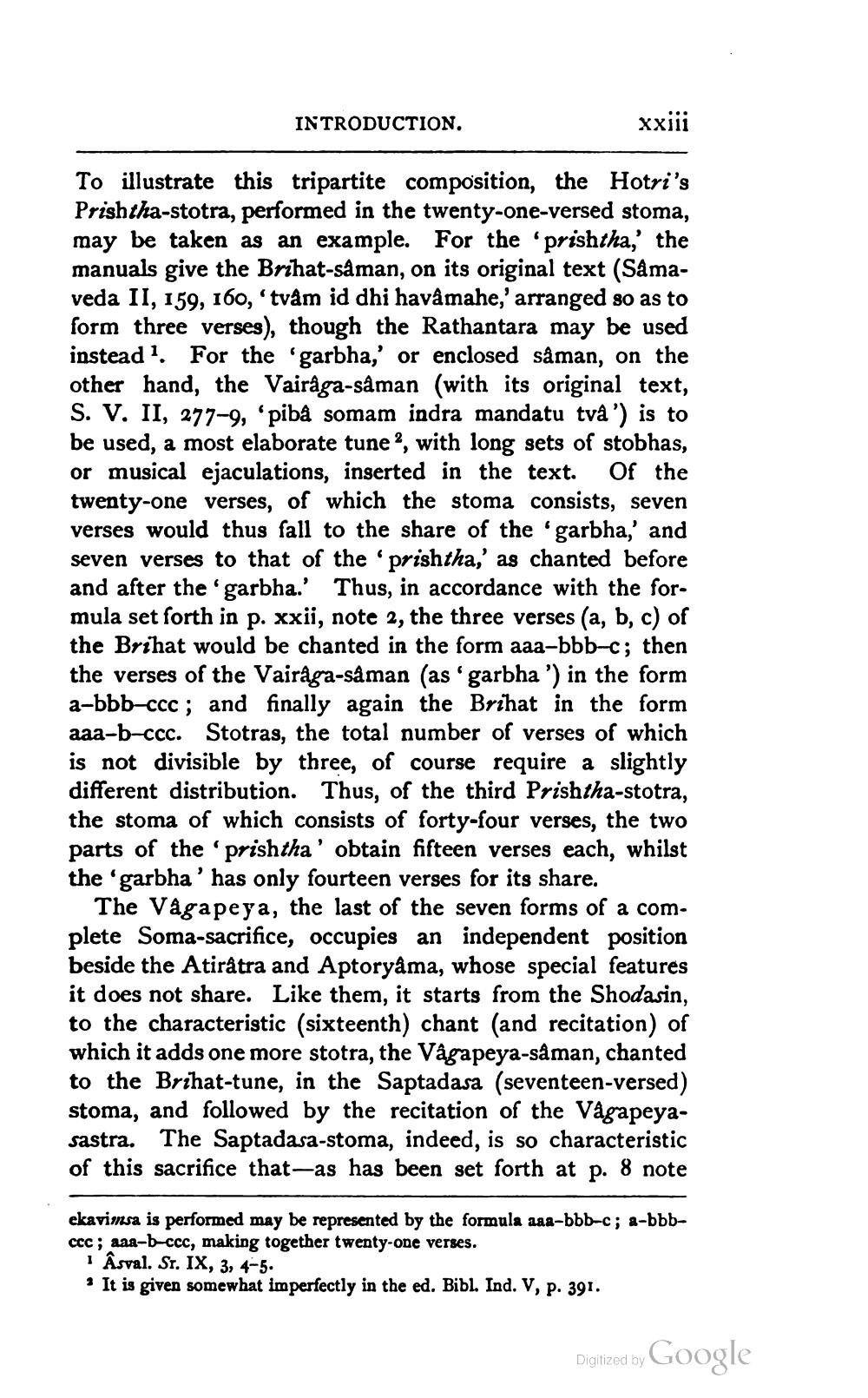________________
INTRODUCTION.
xxiii
To illustrate this tripartite composition, the Hotri's Prishtha-stotra, performed in the twenty-one-versed stoma, may be taken as an example. For the 'prishtha,' the manuals give the Brihat-saman, on its original text (Samaveda II, 159, 160, 'tvåm id dhi havâmahe,' arranged so as to form three verses), though the Rathantara may be used instead. For the 'garbha,' or enclosed såman, on the other hand, the Vairåga-saman (with its original text, S. V. II, 277-9, 'piba somam indra mandatu tvà ') is to be used, a most elaborate tune?, with long sets of stobhas, or musical ejaculations, inserted in the text. Of the twenty-one verses, of which the stoma consists, seven verses would thus fall to the share of the 'garbha,' and seven verses to that of the 'prishtha,' as chanted before and after the garbha.' Thus, in accordance with the formula set forth in p. xxii, note 2, the three verses (a, b, c) of the Brihat would be chanted in the form aaa-bbb-c; then the verses of the Vairaga-saman (as 'garbha ') in the form a-bbb-ccc; and finally again the Brihat in the form aaa-b-ccc. Stotras, the total number of verses of which is not divisible by three, of course require a slightly different distribution. Thus, of the third Prishtha-stotra, the stoma of which consists of forty-four verses, the two parts of the 'prishtha' obtain fifteen verses each, whilst the 'garbha' has only fourteen verses for its share.
The Vågapeya, the last of the seven forms of a complete Soma-sacrifice, occupies an independent position beside the Atiratra and Aptoryama, whose special features it does not share. Like them, it starts from the Shodasin, to the characteristic (sixteenth) chant (and recitation) of which it adds one more stotra, the Vågapeya-saman, chanted to the Brihat-tune, in the Saptadasa (seventeen-versed) stoma, and followed by the recitation of the Vågapeyasastra. The Saptadasa-stoma, indeed, is so characteristic of this sacrifice that-as has been set forth at p. 8 note
ekavimsa is performed may be represented by the formula aaa-bbb-c; a-bbbccc; aaa-b-ccc, making together twenty-one verses.
i Åsval. Sr. IX, 3, 4-5. • It is given somewhat imperfectly in the ed. Bibl. Ind. V, p. 391.
Digitized by Google




